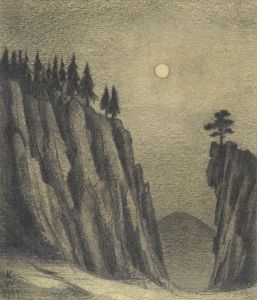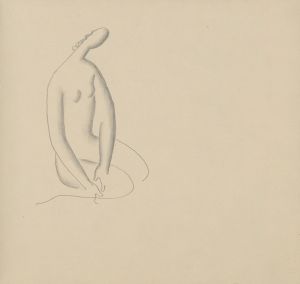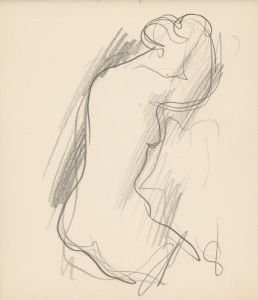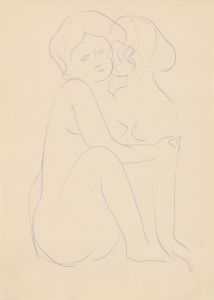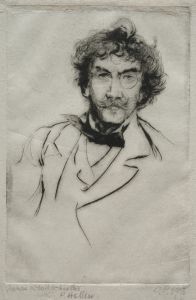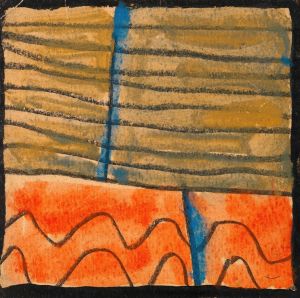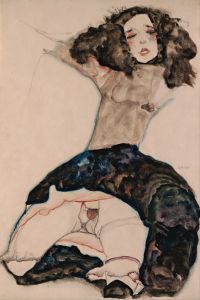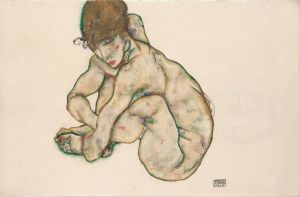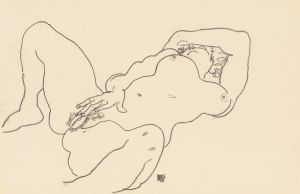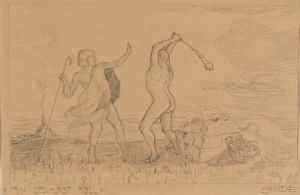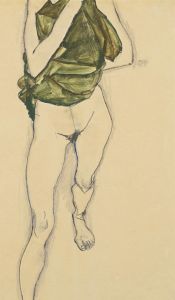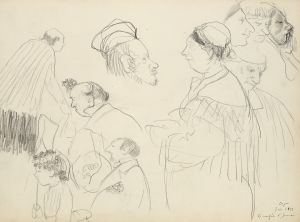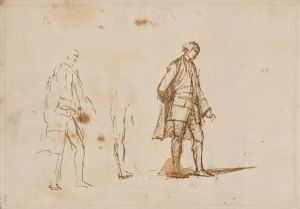
Stadtende bzw. Porträtskizzen Heinrich Benesch
A hand-painted replica of Egon Schiele’s masterpiece Stadtende bzw. Porträtskizzen Heinrich Benesch, meticulously crafted by professional artists to capture the true essence of the original. Each piece is created with museum-quality canvas and rare mineral pigments, carefully painted by experienced artists with delicate brushstrokes and rich, layered colors to perfectly recreate the texture of the original artwork. Unlike machine-printed reproductions, this hand-painted version brings the painting to life, infused with the artist’s emotions and skill in every stroke. Whether for personal collection or home decoration, it instantly elevates the artistic atmosphere of any space.
Egon Schiele, an Austrian painter known for his intense and often controversial works, created "Stadtende bzw. Porträtskizzen Heinrich Benesch" in 1917. This piece is a notable example of Schiele's distinctive style, which is characterized by its raw emotional intensity and unique approach to form and color.
The title "Stadtende" translates to "City End," while "Porträtskizzen Heinrich Benesch" means "Portrait Sketches of Heinrich Benesch." Heinrich Benesch was a close friend and patron of Schiele, and their relationship was significant in the artist's life. Benesch, an art lover and collector, supported Schiele both financially and emotionally, which allowed the artist to continue his work during difficult times.
The painting itself is a combination of urban landscape and portrait sketches, reflecting Schiele's interest in both subjects. The urban landscape, or "Stadtende," depicts the outskirts of a city, possibly Vienna, where Schiele spent much of his life. The portrayal of the city is done in Schiele's typical style, with sharp lines and a somewhat distorted perspective that conveys a sense of unease and tension.
The portrait sketches of Heinrich Benesch are integrated into the composition, showcasing Schiele's skill in capturing the essence of his subjects with minimal lines and expressive features. These sketches are not detailed portraits but rather quick, impressionistic renderings that convey the character and presence of Benesch.
Schiele's use of color in this piece is also noteworthy. He often employed a muted palette with occasional bursts of more vibrant hues, which can be seen in the contrast between the somber tones of the cityscape and the more lively colors used in the portrait sketches. This juxtaposition highlights the duality of Schiele's work, balancing between the bleakness of urban life and the vitality of human presence.
The year 1917 was a tumultuous time for Schiele, as it was during World War I. Despite the war, Schiele continued to produce art, and his work from this period often reflects the anxiety and uncertainty of the time. "Stadtende bzw. Porträtskizzen Heinrich Benesch" can be seen as a reflection of this era, capturing both the physical and emotional landscapes of the period.
Egon Schiele's career was tragically cut short when he died of the Spanish flu in 1918 at the age of 28. Despite his brief life, Schiele left a lasting impact on the art world, and his works continue to be celebrated for their emotional depth and innovative style. "Stadtende bzw. Porträtskizzen Heinrich Benesch" remains a testament to Schiele's unique vision and his ability to convey complex emotions through his art.





